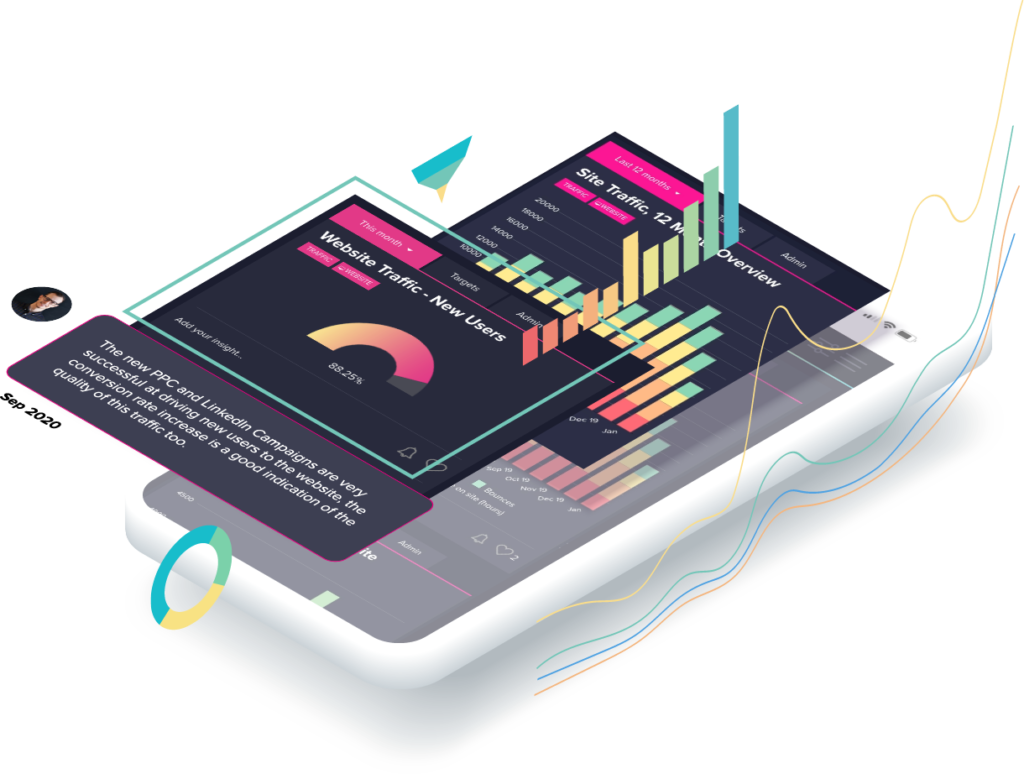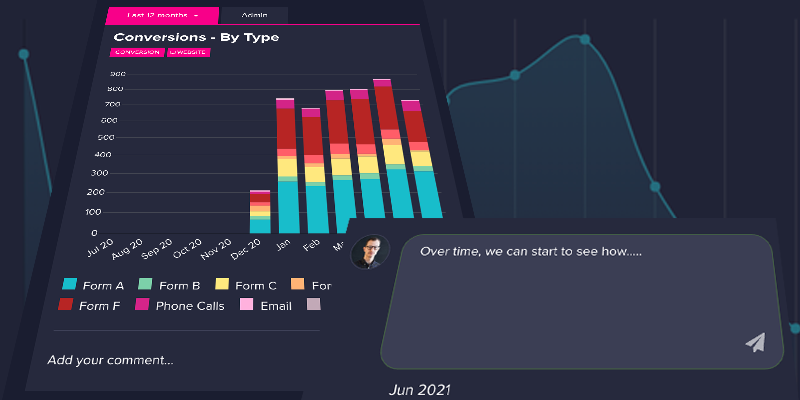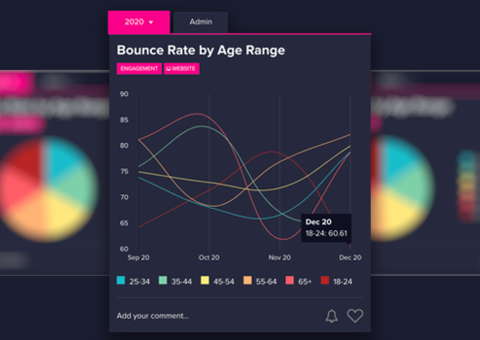In this article, we explore how your marketing data can be used to drive your strategic decision making, empowering you to make better choices and deliver better results.

From recent Marketing graduates to established Marketing Directors and CMOs, many will resonate with the words of John Wanamaker (a very successful US merchant and political figure from the 1800s, considered by some to be a “pioneer in marketing”) where he famously lamented:
“Half the money I spend on advertising is wasted; the trouble is I don’t know which half.”
John Wanamaker
A pretty damning quote for the marketing and advertising industry. In fact, many marketing leaders and industry commentators claim that it’s even worse than half, and that the majority of advertising/marketing budgets are wasted.
But in today’s data-driven world, this just does not have to be (and should not be) the case. Reports claim that by 2025 its estimated 463 exabytes of data will be created daily! A proportion of which will be data from your digital footprint, most of which will go undiscovered, unread and under utilised.
From a recent LinkedIn survey of digital leaders and marketers undertaken by the OmniBI Team, a resounding number of respondents demonstrated the sheer array of channels being utilised today:
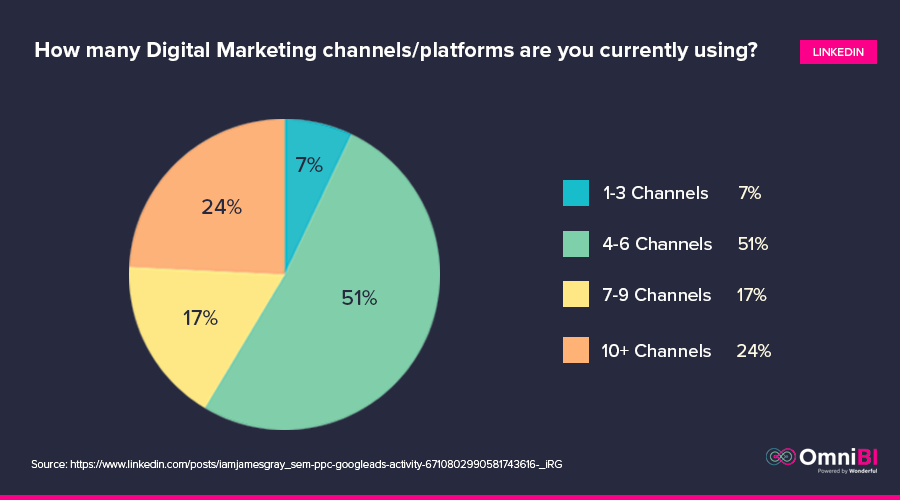
The majority, 51%, use between four and six digital channels, with almost a quarter, 24%, using over ten channels. Most interestingly, this alludes to the fact that the diversity of channels in use today requires marketers to be multi-faceted and highly diligent in their approach.
We asked marketers to count individual ad platforms, social networks, websites et al as one channel. A small number of survey respondents additionally commented on the poll, happily listing out examples of the specific channels they utilise: “Website, Google PPC, Bing PPC, Facebook, Instagram, Twitter, Pinterest, Affiliate, Email, SMS, Digital PR, Subscribers, App, Print Flyers, Referral, Influencers…” – quite the myriad and, more importantly, quite a variety of data sources to leverage.

The challenge here lies in being able to use all of this data (well, the meaningful bits!) to make actionable decisions. Statistics show that 47% of marketers suffer from “siloed and difficult to access data”. This multi-platform data takes time to source, analyse, dissect and aggregate (which is where OmniBI comes in, of course). Plus, different marketers, in different teams, using different platforms end up pulling in different directions toward the one same goal.
This is where adopting a universal approach to this multi-platform data becomes the pivotal element, enabling change within a business. Without data analytics, Wanamaker’s statement comes true – with data analytics, marketers have an unfathomable advantage over marketers of the past, and those who chose to embrace a data-driven strategy will, ultimately, win out. Data enables teams to analyse the past and work out which precise campaign(s), message(s) or process(es) delivered the best results for the desired goal. In fact, businesses using data-driven strategy drive up to 8x more ROI.
Data isn’t all things to all people.
A successful data-driven strategy relies on teams choosing the right metrics against which to measure success. This certainly doesn’t mean the same thing to everyone in the team – the ‘metrics which matter’ vary vastly at different levels of the marketing operation and of the business as a whole.
Marketing Executives, tasked with the execution, delivery & optimisation of individual campaigns may look at metrics like ‘engagement’ and ‘sentiment’ to steer their decision making. Let’s take a social-first campaign execution – it’s valuable for those managing these campaigns to dig down at campaign, post and asset level to measure the success of individual campaigns – to identify what worked and what didn’t. This is the basis of good optimisation decision making – optimisation is, by it’s very nature, a ‘tweak and refine’ process.

However, CMO’s CEO’s and others at C-suite level are less interested in finding out which image on a Facebook carousel generated the most dwell time and/or clicks. This level of sentiment and engagement means relatively little to them in of itself. At this level, it’s the larger numbers which matter (and more often than not this boils down to revenue generated & ROI). Joining these dots is key: demonstrating that the sum of the small incremental campaign adjustments and enhancements combine to deliver the ‘big’ numbers.
To a degree, data-driven marketing in the trenches is about creating successful campaigns; but at C-Suite level, it’s more about demonstrating that success within the company.
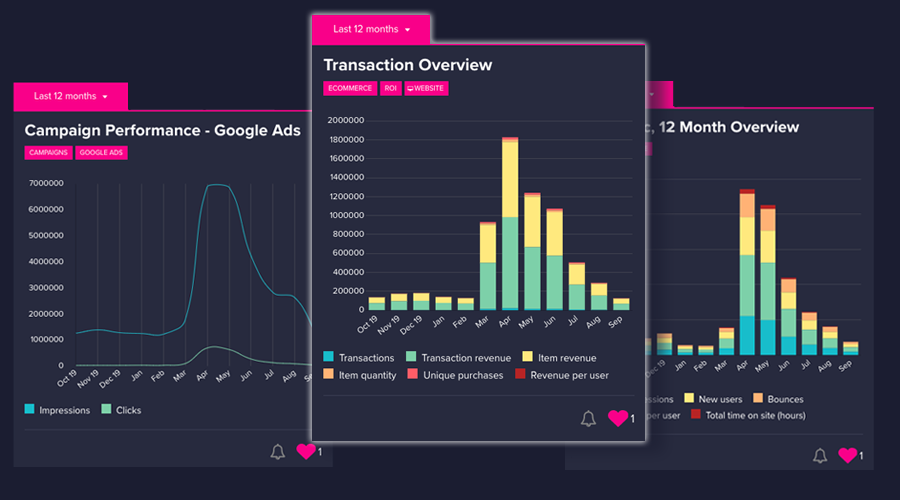
It’s clear that no matter your role in the organisation, your marketing data should be used to drive your strategic decision making, empowering you to do more of what works and less of what doesn’t, delivering better results. Demonstrating this is the challenge, which is where reporting is a key differentiator.
For marketers, “a clear reporting strategy is the difference between being successful, and your boss knowing that you are.” and to win at this game, reporting the right information to the right people, in a wonderfully simple way is paramount.
Data-driven marketing isn’t the future, it’s here already.
Some say that “data-driven decision making is the future of marketing”. We believe that it’s the “present”, it is here now. We’ve demonstrated the importance of data in enabling brands like yours to:
- Engage your audiences (and do so more personally).
- Create more relevant & better targeted content.
- Identify issues & negative trends and re-steer the ship.
- Do more of what works (leverage success, deliver better ROI).
- Do less of what doesn’t (stop wasting money, learn from mistakes).
Isn’t it about time we all became Data Scientists (to a degree)?
Going back to Wanamaker’s fable, we think it is possible to know which half of your marketing is performing. In fact, it’s actually possible to determine how much of the budget is working, how much isn’t performing, where it is performing, why it is performing, who it’s performing for and what actions can be taken to optimise this performance, whilst demonstrating the impact on the ‘big numbers’ too. Across all your channels. All in one place.
Pretty cool huh?
If you’d like to find out how to achieve this, and to explore what this could mean for you and your business, do not hesitate to get in touch, or book a demo today.

